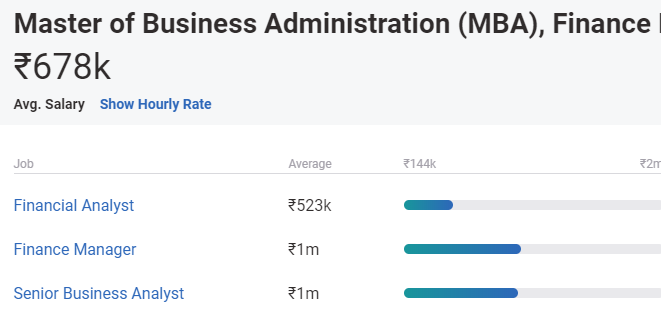
Some companies use debit notes to bill for items that are not their primary business. For example, if a company sublets some of its warehouse space, it might issue a debit note for the rent. If a client is underbilled on an invoice, for example, a debit note might be debit note means purchase return issued for the missing amount that should have been billed. A debit note, also known as a debit memo, is a type of document sent by a buyer to a seller in order to obtain a credit note in writing. The source document for the Purchase returns diary is a debit note.
As a result, receivables often decrease when a Debit note is issued. A debit note, sometimes known as a voucher, is a document one party sends to another indicating that the recipient’s account has been debited in the issuer’s books. Debit and credit notes can be sent out before or after invoices are received by the buyer. The ‘credit note’ definition is used in B2B to describe documents used to help balance accounting books.

For more effective bookkeeping, special purpose books or subsidiary books may be required. Take the case of the business “Amazing LLC,” which purchases vendor “Mega LLC.” After receiving the materials, Amazing LLC discovers that the shipment contains faulty items worth Rs. 50,000. As a result, unique LLC must now reduce the liability on its balance sheet as payment due to creditor Mega LLC. Amazing LLC thus sends Mega LLC a debit notice for Rs. 50,000, indicating that he debited Mega LLC’s account in their records. The Buyer will compile and send the Seller with a debit note and a debit note reflects the sum debited from the company account and the reasons for the same.
Alternate Forms of Debit Notes
Such instances can complicate invoice processing operations, which in turn can negatively influence the order-to-cash (O2C) process.
Provisional Credit: What it is & How it Works Chase – Chase News & Stories
Provisional Credit: What it is & How it Works Chase.
Posted: Mon, 26 Sep 2022 19:49:50 GMT [source]
As time goes on and the balance remains unpaid, the verbiage of the debit note may shift from a friendly reminder to a demand for payment. A debit note sent by the buyer to the seller of goods or services, related to a purchase invoice, indicates an adjustment to the original invoiced amount. It is effectively a credit for the buyer and a debit for the seller. Since debit notes are typically written as letters and do not always call for immediate payment, they are distinct from invoices. This is applicable when the debit note is used to notify the buyer of impending debt obligations based on payments that have not yet been legally invoiced.
Supplier Item Debit: Additional Details
In these cases, enter quantities returned to the supplier as negative numbers. However, if the cash seller has also been defined as a supplier and offers an account credit rather than a cash refund, a debit note may be used. If a goods receipt originally recorded receipt of inventory items, another goods receipt must be created to record the return of goods (if any) on a debit note.
For instance, a business may issue a debit note for the rent if it sublets portions of its warehouse space. Debit and credit notes are a normal part of B2B relationships and payments. They are primarily a means to maintain a clear accounting record. The former is a delayed return of a specific credit value to a buyer, whereas the latter is a direct repayment to them. On the first invoice, Company Z writes a credit note and mails it to A, cancelling the invoice and recording the amount specified (£65) as positive under accounts payable.
The total of the purchase returns is calculated at the end of the month. It is the total purchases returns for the month, which is debited from the ‘Sundry creditors account’ and posted to the credit side of the purchases returns account. A credit memorandum is a commercial instrument issued by the seller to the buyer to notify the buyer that a credit has been applied to the buyer for various reasons.
What is the different between Credit note and Debit note?
In a supplier and buyer transaction, the supplier issues a “credit note” as a sales return. By doing so, the supplier informs the buyer that the purchase returns are accepted. A credit note, also called a “sales return credit note”, is given by the supplier in exchange for a debit note.
For example, the seller may discover that it invoiced the buyer for $6,000 when the actual amount due for the sale is $7,000. It will then send a debit note to the buyer for the additional $1,000, along with an explanation for the change in the invoiced amount. Nevertheless, Moon Invoice allows companies to issue, generate, transmit, browse, download, email, and print credit notes to their clients with a single click! In addition, the program offers an innovative function that lets firms know if credit notes are utilized or unused. Please find below a brief tutorial on how to issue credit notes using our web-based billing system.
What is a debit note?
In contrast, when the customer or the buyer returns goods, he or she receives a credit note that stresses that his or her account is credited with an amount mentioned in the note. Normally, a debit note is issued when there is a return outward (purchase return) while in the case of return inward (sales return) credit note is issued. In a transaction, when the buyer returns the goods to the seller, the buyer will issue a debit note and the opposite party will issue a credit note in exchange for the debit note. When the goods are returned to the seller or supplier, a debit note is issued to him which indicates that his/her account has been debited with the repective amount. On the other hand, when a customer returns goods, a credit note is issued to him which shows that his account has been credited with the amount indicated in the note. Here in the given article we have discussed the substantial differences betweenn debit note and credit note, take a read.

IDFC FIRST Bank shall not be responsible for any direct/indirect loss or liability incurred by the reader for taking any financial decisions based on the contents and information mentioned. Please consult your financial advisor before making any financial decision. Introduction
To process transactions through your Purchasing System, first set up… If you override any of this information during Debit Note entry, it applies only to this Debit Note and will not alter the Supplier (Vendor) Master Record. They allow you to enter Debit Notes and Invoices for specific Items (Stock and Non-Stock) that you purchase.
Although the balance outstanding may be mentioned, payment is not expected until the buyer receives an official invoice. Real money is not transferred until a legitimate invoice is generated, despite the fact that real products are being exchanged. Instead, to keep track of inventories supplied and payments due, debits and credits are recorded in an accounting system. Credit notes (or credit memos) are documents issued as receipts for erroneous or changed invoices or orders. Credit memo (short for “credit memorandum”) is another name for a credit note. This is a commercial document that the supplier creates for the client to inform them that they are obtaining a credit for various reasons.
All of the initial entries that are recorded as transactions are kept in the cashbook. The typical debit note is in the form of a letter or some type of document format that is implemented by the company to serve as a reminder. Collection letters that are sent out when an invoice is not paid within terms often use a simple “reminder” letter format that calls attention to the fact that the amount owed has not been paid.
We hope this blog provided you with appropriate insight on how debit notes work, on what grounds they can be issued, and how they differ from credit notes. Debit and credit notes are a normal part of the invoicing process. However, if a company has cashflow issues, it should think about ways to optimize its internal processes such as providing B2B financing options to customers.
- A debit note is a notification and request for a debt obligation to be paid.
- In addition, there is a deadline by which information must be included in the GST return.
- When you get back home, you realise that the bread you bought is stale and the milk is spoilt.
- Nevertheless, Moon Invoice allows companies to issue, generate, transmit, browse, download, email, and print credit notes to their clients with a single click!
Generally, a seller either considers it a standard business practice and uses it according to internal procedures or does not use it at all. In some cases, a buyer can request a document with the information contained in a debit note to meet internal recordkeeping requirements. Some debit notes may be sent as informational postcards that only serve as a reminder of the debt the buyer has accrued.

